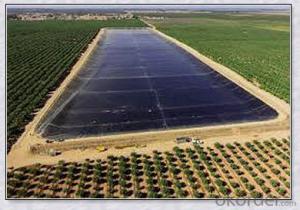When it comes to constructing water or chemical works, the material you choose is very important. HDPE geomembrane is one such material that has become a popular choice in the recent past. In this article, we will explore the HDPE geomembrane specifications and examine why it is becoming the ultimate preference for many engineers and builders.
First and foremost, let’s talk about what an HDPE geomembrane is. It is a form of thermoplastic polymer called High-Density Polyethylene (HDPE) highly recognized for its durability, flexibility as well as resistance to diverse chemicals and environmental stressors. In the capacity of a geomembrane, it functions as a barrier against fluid movement thereby providing reliable solutions for containment and protection in various applications.
Versatility in Applications
The HDPE geomembrane specifications make it an ideal choice for a wide range of applications. Material used can be tailored specifically to suit any given project from landfill liners to canal linings right through reservoirs and artificial lakes. Its malleability with different surfaces under extreme temperature conditions without losing integrity are testaments to its versatility.
Durability and Longevity
One of the key aspects of HDPE geomembrane specifications is its durability. It has been proven that HDPE materials have long service life which could last tens of years with minimal degradation taking place over these periods. Thus, this longevity makes it suitable for projects requiring long-term solutions with low maintenance.
Environmental Resistance
Beside HDPE geomembrane resistance to UV radiation in relation to other features of these membranes there are several issues addressed by HDPE Geomembrane Specifications; namely: oxidation; microbial attack; etc., which may cause their ineffectiveness when exposed harshly on them. This attribute becomes even more vital especially when dealing with places that experience enormous heat from sunlight or severe weather conditions.
Installation and Flexibility
Because they are flexible, installation of HDPE geomembranes is easy. The material can be easily cut and shaped into desirable forms that fit the landscape of the project site. This flexibility also enables their application in complicated structures, hence, making it a choice for projects with complex designs.
Welding and Seam Strength
What matters most about seams in HDPE geomembrane specifications is the welding process. Properly done welding ensures that there are no leakages on the seams as they will be as strong as the material itself thus creating a seamless barrier. These seams are very essential for overall performance and dependability of any such liners.
Quality Assurance and Testing
In HDPE geomembrane specifications quality assurance plays a big role. The testing which may include thickness, tensile strength test etc., has to be carried out to ensure that the material meets all set standards. This kind of testing guarantees that a liner will work well in practice.
Cost-Effectiveness
Lastly, one more key aspect outlined by these HDPE geomembrane specifications is cost-effectiveness. It may require more capital at first as opposed to other materials but based on maintenance and replacement costs over time, this decision could save you money in future years when choosing any alternative option mentioned before.
To conclude, the HDPE geomembrane specifications have various products that can prove helpful in projects requiring a trustworthy and durable solution. From its adaptability and strength to its environmental tolerance and cost effectiveness, HDPE geomembranes are preferred by many engineers and construction industry experts. I think about where these supplies will go as we develop them further.

